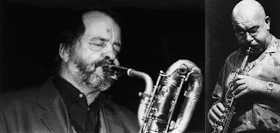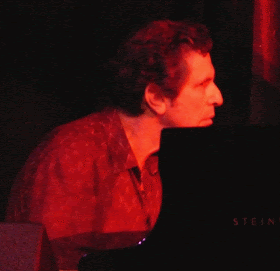Label: Labor Records – LAB 7069
Format: 2 × CD, Album - Released: 02/28/2012
Style: Free Jazz, Free Improvisation
Recorded at Nola Penthouse Sound Studio, NYC 1966 & recorded at O' Brien's Studio, Teaneck, NJ 1971/1973
Artwork [Illustration] By – Johann Feindt
Design By – Conni Lechner; Photography By – M. De Chiara
Engineer – Orville O'Brien / Tony May
Producer, Composed By – Heiner Stadler
Music that stretches boundaries and, yes, might sizzle the brain pan a bit.
ARTISTS:
Jimmy OWENS – trumpet (CD1: track 1; CD2: track 4); Tyrone WASHINGTON – tenor saxophone, flute (CD1: tracks 1-3; CD2: tracks 2-3); Garnett BROWN – trombone (CD1: track 1; CD2: track 4); Heiner STADLER – piano (CD1: tracks 1-3; CD2: tracks 2-3); Reggie WORKMAN – bass (CD1: tracks 1-3; CD2: track 1); Brian BRAKE – drums (CD1: track 1); The Big Band of the North German Radio Station: Manfred SCHOOF, Gerd DUDEK, Albert MANGELSDORFF, Wolfgang DAUNER, Lucas LINDHOLM, Tony INZALACO (CD1: track 4); Dee Dee BRIDGEWATER – vocals (CD2: track 1); Joe FARRELL – tenor saxophone (CD2: track 4); Don FRIEDMAN – piano (CD2: track 4); Barre PHILLIPS – bass (CD2: track 4); Joe CHAMBERS – drums (CD2: track 4)




Some recordings should come with a sticker which states: for those willing to be challenged. German-American composer, producer, pianist, arranger and bandleader Heiner Stadler’s reissued, remastered, restructured and expanded release, Brains on Fire (which initially came out as two separate vinyl volumes in 1967, which are often rare to find), certainly qualifies for such a caveat emptor. For some, Stadler is known as an interpreter of other musicians’ material, due in part to last year’s remixed reissue of his 1978 outing, A Tribute to Monk and Bird, which was also put out on Stadler’s Labor label. Stadler has also reissued other titles from his back catalog, including 1976’s Jazz Alchemy (which came out in 2000) and the 1996 compilation Retrospection (reissued in 2010). This year it is time to reevaluate one Stadler’s most original efforts, Brains on Fire. This CD version contains three tunes never before heard and marks the first CD presentation of five other works.
One reason to listen to the two-disc Brains on Fire is to hear then-current and up-and-coming jazz luminaries dig deeply into material which spans the perceived gap between avant-garde, post-bop, tone-row experiments and European serialist composition. The eight long pieces (four per disc) were recorded between 1966 and 1974 and feature 17 artists (as well as an orchestra), including trumpeter Jimmy Owens (who worked with Miles Davis in the '50s and was a founding member of the Thad Jones/Mel Lewis Orchestra), bassist Reggie Workman (notable for his work with John Coltrane, Art Blakey’s Jazz Messengers and Yusef Lateef), and future stars such as saxophonist/flutist Joe Farrell (who subsequently had crossover success on the CTI roster) and a young Dee Dee Bridgewater (a few years before fame found her, when she was still singing with the Thad Jones/Mel Lewis Orchestra).
Stadler uses several ensemble configurations ranging from a bass/vocals duet to a quartet (on four tracks) to a big band. The first CD’s opener, “ No Exercise ” (taken from a 1973 session but making its debut here) features a sextet with a three-horn frontline (Owens on trumpet, Tyrone Washington on tenor sax and Garnett Brown on trombone) with a three-piece rhythm section (Stadler on piano, Brian Brake on drums and Workman). The 12-minute workout starts with Workman’s arco bass, followed by Owens’ warm trumpet and then the rest of the group steps up to help present Stadler’s avant-garde blues which is shaped by a 12-tone row. Workman’s astute bass is a highlight during this spontaneously-surging piece, but so is Washington’s unfettered sax. Since Washington later left music because of a religious conversion, Brains on Fire is one of the few places listeners can hear the obscure sax player display the width of his skills. Washington is also heard to great effect on three other tracks. The post-Coltrane “ Three Problems ” (a 1971 performance never before released) crosses the lines between hard bop and free jazz, and is an often-chaotic construction with Washington’s lacerating sax leading the charge. Workman adds a transcendent bass solo, which temporarily ebbs the high-energy level, but for the most part “ Three Problems ” is almost 13 minutes of roaring density. “ Heidi ” has a slower, spiritual treatment and listeners initially may find this to be the most coherent cut, although “ Heidi ” also eventually edges to a tumultuous portion where written and improvised sections are fused to the point where it is impossible to tell where one ends and the other commences. The other quartet tunes, “ U.C.S ” and “ All Tones ” (both on CD2), are parallel explorative compositions which delve into variations on texture, phrasing and theme akin to Coltrane’s brilliant free recitations such as Interstellar Space or Ornette Coleman’s vitality-fueled Free Jazz, where the music is elaborately extemporized and not easily absorbed in a single listen. Howard Mandel’s liner notes advise listeners to let “ U.C.S ” and “ All Tones ” sweep the listener along and it’s a good recommendation.
Two of the longer compositions employ very different approaches. The 24-minute Russ Freeman-penned “ Bea’s Flat ” (a 1974 recording offered here for the first time) is a striking, customized blues given over entirely to The Big Band of the North German Radio Station, conducted by Dieter Glawischnig. Several band members are spotlighted as soloists (sax and piano in particular) and the full ensemble actually steps away at times, emphasizing single instruments. The result is somewhat like a meeting between Duke Ellington’s and Sun Ra’s groups. Reggie Workman and Dee Dee Bridgewater’s 20-minute bass/voice pairing, “ Love in the Middle of the Air ” (a shorter take can be found on Retrospection) is nearly as remarkable in a wholly dissimilar way. Bridgewater stretches, undulates and heightens beat poet Lenore Kandel’s minimal lines, phrases and words while Workman glides and rolls on his bass with perfect sympathy: his meticulous arco work in particular is an emotional standout.
Despite recordings from four studios and engineers, there is observable and high quality engineering and audio constancy over the course of the two-hour, eight-track project. Even during the most intense moments instruments rise out from the mix rather than getting washed aside, and when the heady musical concoction is confined to just a few instruments (like bass or vocals) the sound is wonderfully expressive.
_ By
Doug Simpson
(February 22, 2012, AUDIOPHILE AUDITION)
Links in Comments!







































.gif)











.gif)
